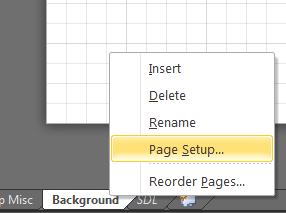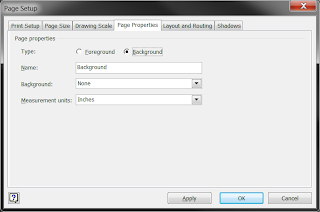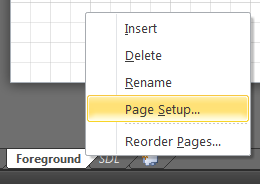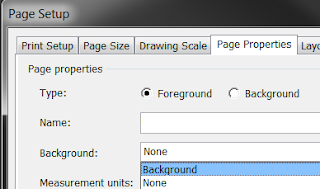The perfect is the enemy of good. Here are some stories of the pursuit of Web, writing, grades, and
Tridion sharing "perfection" and its unintended consequences (in
Pixar Prompt format).
Once Upon a Web Development Time
Once upon a time there was a Web development team. Every week, the business analyst checked the site for broken links. One day the team wanted perfect error logs. Because of that, the team redirected all 404 page-not-found errors to the homepage. Because of that, the BA stopped finding broken links. Until finally the team brought the 404 page back to properly monitor broken links.
In a past role I was in charge of basic Web Business Analysis tasks which included everything from requirements to reporting. I used tools like Webtrends and
SortSite to report on my company's sites. The development team also used
ELMAH to find and track errors.
Over time we were able to track, fix, and reduce errors across sites but pesky 404 (page not found) errors kept coming up on the corporate site. These could be from out-dated bookmarks, typos, or occasionally when I entered a url that ended with /alvin-says-hi.aspx.
But one day we achieved 404 perfection. My link checking tests reported no broken links. Suspiciously this included pages
meant to return a 404.
To "fix" the 404s, apparently we redirected all 404 errors to the homepage.
Oops.
Did that sink in yet? This meant for awhile that:
- The site could have an unlimited number of broken links that would never show up tools meant to detect broken links
- Web analytics might still report bad links that we actually visited, though (if someone looked for it)
- Issues linking to certain pages could go undetected. Email campaigns that had a typo would still seemingly link okay to the site, even if the link should have gone to a specific page.
The team eventually brought the 404 page back so they could better monitor broken pages.
Some things can't possibly be 100% 100% of the time. You can't improve if you don't honestly measure.
Btw, I should plug the fact that SDL offers SDL Safeguard, a comprehensive site quality/brand/compliance checking solution.
Don't Measure the Small Stuff
Once upon a time there was a proposal writing team that answered RFPs. Every day the manager reviewed proposals for spelling errors. One day she found five errors. Because of that, she sent the proposal back. Because of that, the writer fixed it. Until finally the team (mostly) never worried about spelling errors again.
BSMSO has an approach for things that should be 100%. When reviewing a proposal, if it hits a certain number of errors, she kindly asks for another review. She doesn't need to maintain a list of "proposals with 100% correct spelling." When excellence is expected and typically delivered, you don't need to nitpick the fact something was less than perfect. You fix it and move on.
There's no need to measure the small stuff and if they did, the tedium for professional writers would either impact morale or slow the process down. You don't need to measure the things that don't need to be improved.
100% Might Be Too Small
Once upon a time there was a student. Every day, she got good grades. One day she got a less-than-perfect score. Because of that, she realized what she could improve on. Because of that, she worked on what she was good at while fixing the things she was bad at. Until finally "100%" held no sway over her.
Although school taught us to aim for 100%, you can't learn to be better if you always get perfect marks. "You're at 100% and doing everything expected of you" doesn't confirm what your impact is, what you could achieve, or what you could work on (or ignore to focus on the things you're really good at). Set your bar too low and people may miss their true potential.
The Cost of Winning
Once upon a time there was a Tridion consultant. Every day, he asked and answered Tridion questions privately among his peers. One day he decided to try for the sharing award. Because of that, he shared very much. Because of that, he won an award. Until finally...
I'm on the selection panel of an
uber geek award for Tridion sharing. The impact of "100%" on this program is similar to that moment at the end of the school year after a big exam. In the last nights of cramming for the test maybe you promise you'll go back and
really learn the material. Or maybe you'll send in the extra credit assignments to guarantee a certain grade.
What really happens is you finish the big exam, your mind starts to slowly forget very-important-facts-now-turned-trivia, and you go off to do something more interesting.
So by offering a known award with supposedly clear criteria, we've created an extrinsic award when we really want intrinsic motivation.
Watch or
read Paniel Pink to get the difference.
This suggests my attempts to encourage you to share should focus on the parts of sharing that appeal to you most. I know it's not time, because I see you on Facebook and Skype. :-) You can't claim a lack of topics because there's always a topic in your email, in recent code you've written, as a section of the
documentation, or from a growing list of
questions.
Tip for those trying to win any award: know why you're starting in the first place. If your target (e.g. win a community sharing award) is your incentive, then you'll likely reach it. But there's a chance you won't have the drive in subsequent contests or years. Interests change over time for sure, but some longevity demonstrates you're in it for causes larger than yourself.
If "100%" has no away for you, if you're compelled to learn, excel, and to give back then you will win awards, the appreciation of others, and maybe eventually you'll start shaping the communities you chose to join.
So how do we end this story? "Because of that, he won an award. Until finally..."
- He paid the price of 100% and stopped sharing as much because he reached his goal. Or...
- He encouraged others to share. Or...
- He changed the community itself.
Don't let 100% nor perfection distract you from improving or recognizing what you're already great at.


















